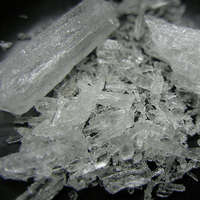On Oct. 17, Iranian border guards clashed with drug traffickers on the wild Iran-Afghan frontier and subsequently seized 331 lbs of narcotics contraband. The incident would be just one of many such skirmishes that take place every week, were it not for one difference: The seized drugs were not the usual suspects of Afghan opium and hashish, but rather synthetic drugs, highlighting alarming changes to the Southwest Asian narcotics industry.
Synthetic drugs, such as potent crystal meth (called "shisheh," or "glass" in Farsi), LSD and various forms of refined heroin (including a smokable, condensed-rock form referred to locally as "crack") are flooding South Asia and feeding the region's underground drug culture. Iranian authorities recently stated that the increase in synthetic drugs over the past two years is part of a nefarious marketing strategy by drug traffickers to change addiction behaviors and transform demand from conventional drugs like opium and hashish to those most prevalent in the West. However, the implications of the emerging trends reported from the Iranian front are not restricted to regional concerns. Rather, the production of synthetic drugs -- especially cheaply made amphetamine-type-stimulants (ATS), which include the street variants of ecstasy -- has major global implications for addiction habits, social and health costs, as well as security concerns.
Globally speaking, the demand for ATS is exploding. According to United Nations statistics, the number of people who have consumed ATS at least once within a 12-month timeframe exceeds the number of people who have consumed cocaine and heroin combined. In Pakistan, ATS seizures surged 64 percent between 2005 and 2006; in Iran, seizures increased 60 percent between 2008 and 2009. Only two years ago, abuse of synthetic drugs like ATS in South Asia was limited to affluent young people because of high prices and limited availability. But with increased manufacturing of these harmful stimulants, market prices are dropping quickly. Iran's Drug Control Headquarters indicates that the price of high-quality shisheh decreased significantly between 2008 and 2009, falling from $45,000 to $57,000 per pound to $4,500 to $6,800 per pound. Saeed Sefatian, deputy head for medical treatment of addicts at Iran's Drug Control Headquarters, told reporters that no users of synthetic drugs were registered between 2004 and 2005, but that three years later 4 percent of all addicts used synthetic substances, with the figure having probably doubled since then.

